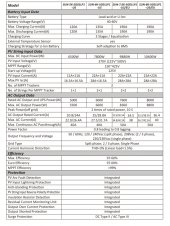All in One inverter has many ways to 'game' the power conversion efficiency numbers.
Deye and SolArk have a boost converter from PV input to an intermediate 500 vdc SCC output. When PV input voltage is close to the intermediate 500vdc level the actual MPPT SCC is doing little voltage conversion, so its efficiency is close to 100%. When the PV input voltages is lower DC voltage, and the boost converter has to do more voltage conversion from a lower input PV voltage to intermediate 500vdc so its efficiency drops.
"MPPT efficiency of 99%" is meaningless as it must go through several more power conversions before it can be used to provide AC output or battery charging. Each of these additional power conversions have their own efficiency that degrade the overall efficiency to output something useful.
In order to electrically isolate and feed the two independent 120vac HF inverters for split phase 120/240vac, the PV MPPT SCC 500vdc outputs are fed into a 500vdc to 250vdc forward converter. This second stage 500vdc to 250vdc converter has about 92% to 97% conversion efficiency.
All this gets the PV power delivered to the two independent 250vdc internal high voltage DC supplies that run the two 120vac sinewave PWM bridge inverters that are connected in series for 240vac output. The 250vdc to 120vac PWM sinewave bridge is fairly efficient in the 97-99% depending on AC output load. Charging battery is also pulled from the 250vdc HV DC nodes.
The battery to high voltage DC converter is the most inefficient of the all the power conversions. Worse for charging batteries than battery supplying HV DC supplies. Battery to HV DC in the 92 -96% range depending on load power.
All power conversions routes through the two independent HV DC nodes. (not including AC input to AC output pass through).
Best conversion efficiency is PV input to AC output when PV input voltage is close to it maximum allowed DC input voltage. (about 99% SCC x 96% intermediate DC-DC x 98% sinewave PWM = 93.1%)
Worst conversion efficiency is charging batteries from a lower voltage PV array. (about 92% SCC x 96% intermediate DC-DC x 92% HV DC to batt = 81.2%)




